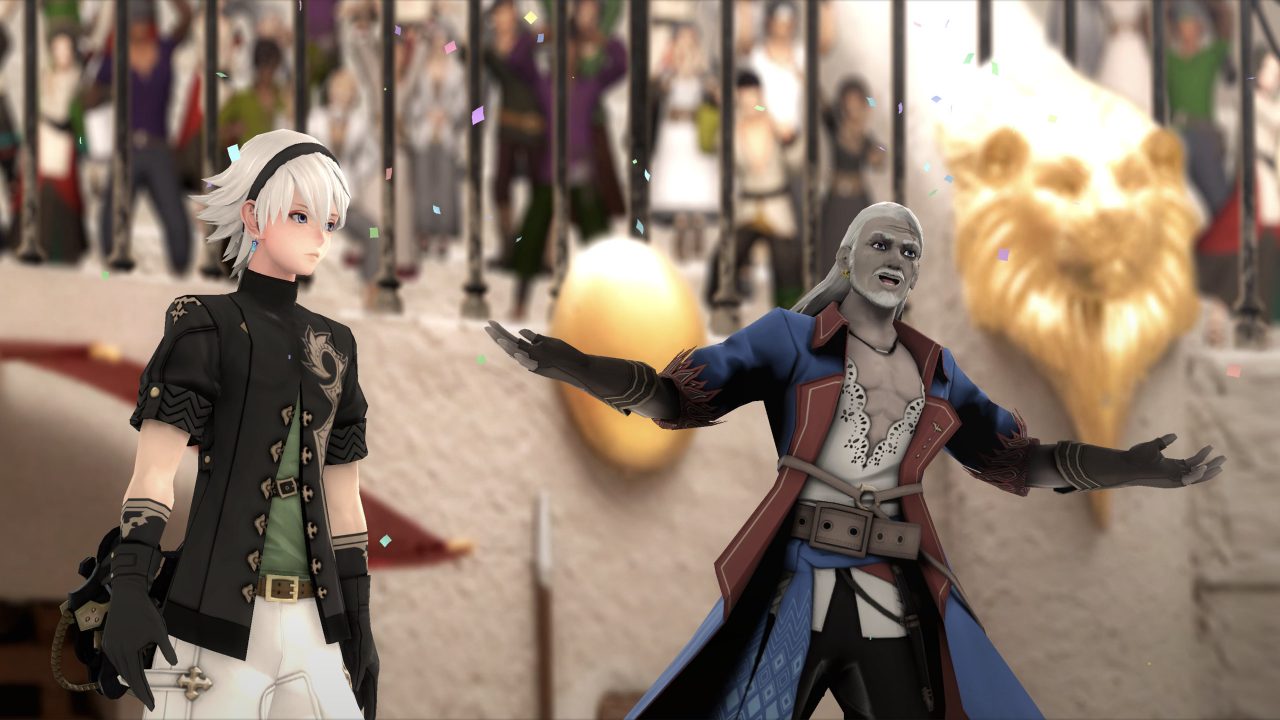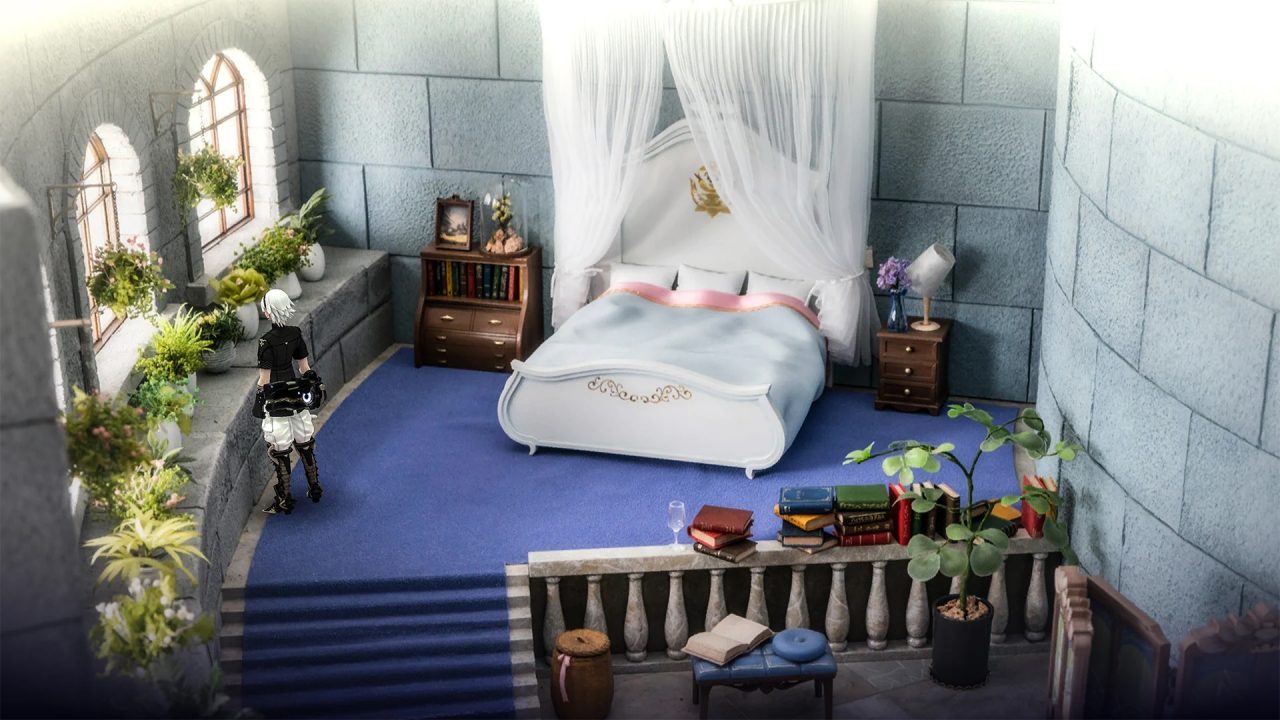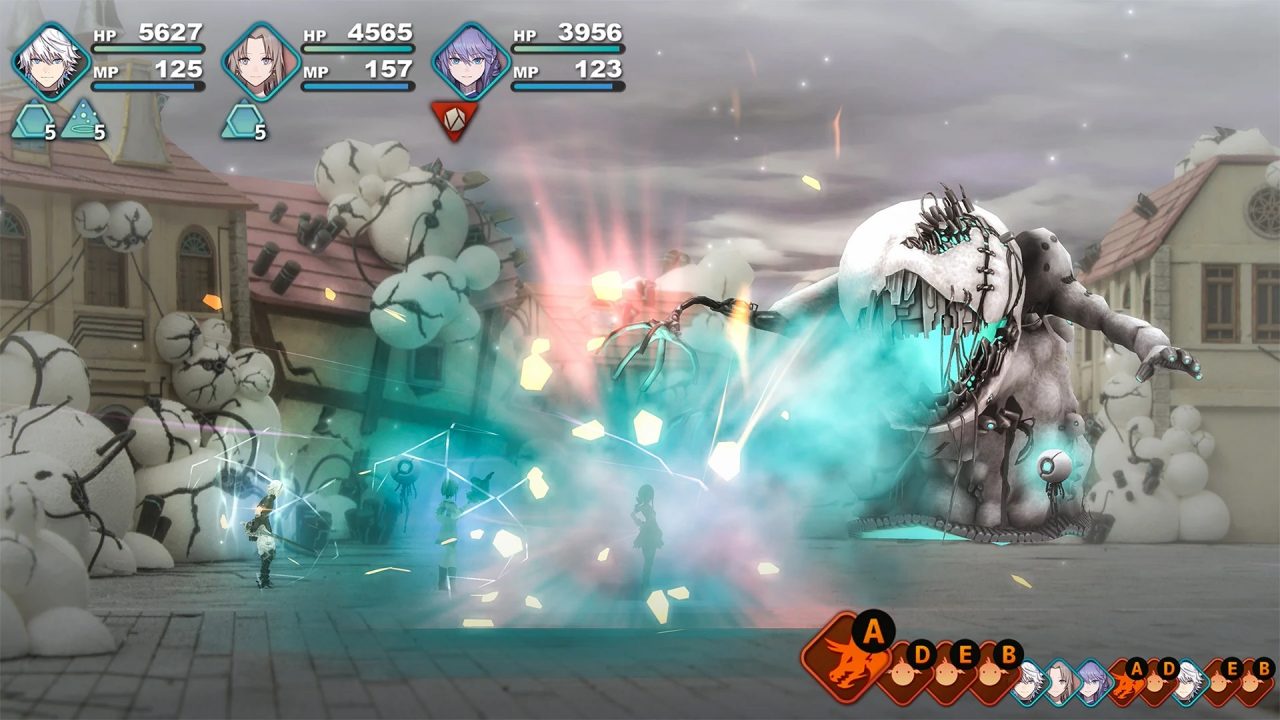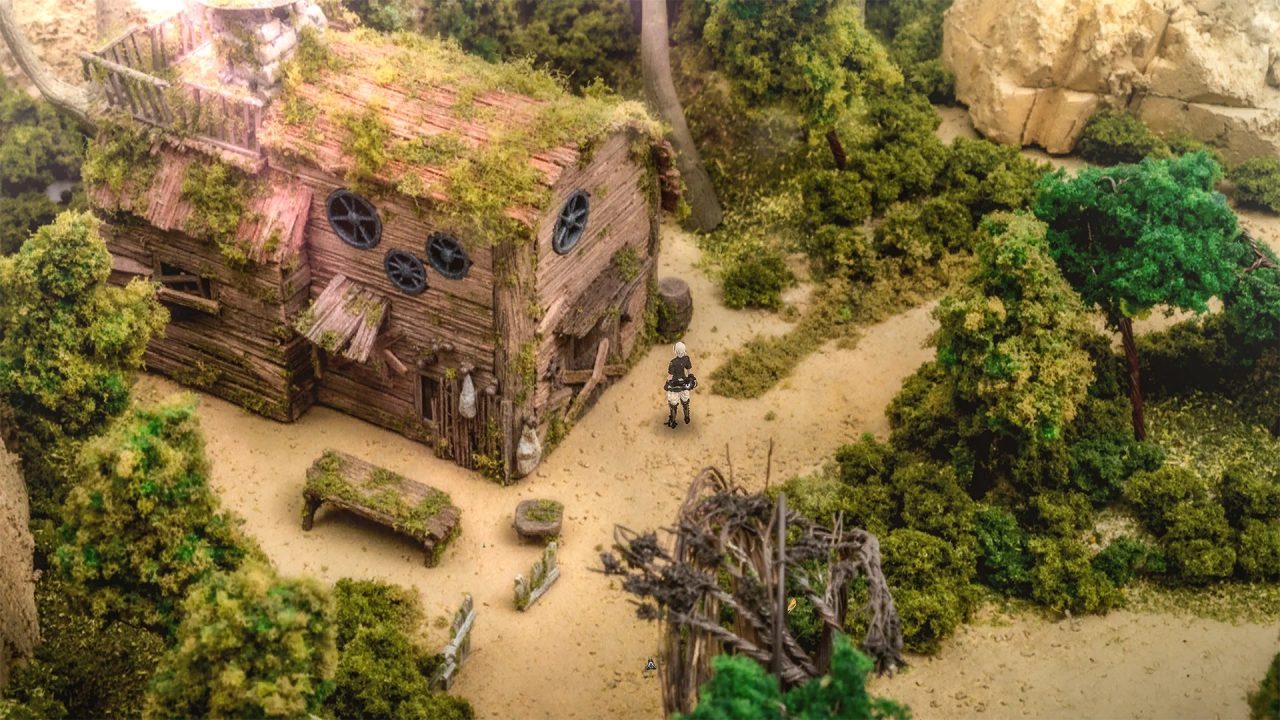As much as we want video games and RPGs to look ahead to the future, there is something to be said for looking to the past. Nostalgia can be a powerful force, and remembering what used to be good two or more decades ago can still make for an excellent adventure in the present day. Enter Fantasian, the latest RPG from Final Fantasy creator Hironobu Sakaguchi and his studio, Mistwalker. This Apple Arcade exclusive has the look and feel of a classic PS1-era Final Fantasy. Since this could be the last project for both Sakaguchi and legendary composer Nobuo Uematsu, I can think of no better inspiration for the twin fathers of the venerable series.
Despite being an Apple Arcade title, which means you will likely be playing it on a mobile device, Fantasian is very much a full-fledged RPG. Its story starts out a little rote, and its main cast represents archetypes you’ve seen before, but as the wheels start turning and you learn more about both the world and its inhabitants, it’s hard not to find yourself drawn in.
Amnesiac Leo wakes up in a strange realm populated by machines, and with the help of some robots he apparently reprogrammed before he lost his memory, he makes it back to the human realm. This world is connected to the machine realm by a hole in the sky that has been spewing out strange devices called mechteria for years. Mechteria is deadly to humans, and its slow encroachment on human settlements is a source of grave concern for the people of this world. Leo immediately embarks on a quest to recover his lost memories. As he meets allies and slowly starts to piece things together, the mystery of these two realms, the mechteria infestation, a malevolent god, and Leo’s involvement in whatever is going on behind the scenes steadily deepens. I found myself jotting down notes with each major plot revelation because Fantasian does a good job of doling out breadcrumbs that gradually widen your view of the game’s world. Even with things starting to become clearer at the end of Part One (yes, only half of the game is available at present), I still have a lot of questions, and I can’t wait to find answers when the second half of the game is released later this year.

As I said before, the main cast members fall into various tropes familiar to longtime RPG fans. There’s the girl with mysterious powers, the haughty princess, the swashbuckling sea captain, the bratty kid, and so on. It remains to be seen whether characters will grow beyond their archetypes, but for what it’s worth, I think they are archetypes done well. One party member in particular — Cheryl, the aforementioned haughty princess — gets a lot of good development and grows beyond her initial impression into an interesting character whom I want to see more of.
Characters also benefit from the addition of Memories, which are text-only vignettes featuring gorgeous background art and beautiful music. These short stories provide background for your party members and reveal some of Leo’s memories, fleshing out characters and the world in the process. One of my favorite moments in Fantasian is a series of memories midway through Part One that involves a major revelation. You might think such an important moment would be ill-served by being conveyed only through text, but I think it’s quite the opposite. The moment is more emotional and impactful precisely because of how it’s presented.
Speaking of presentation, the one thing you’ve likely heard or seen about Fantasian is its diorama backgrounds. They are, simply put, fantastic. Every area in the game is a handmade, real-life diorama photographed at various angles to simulate the pre-rendered feel of a PS1 Final Fantasy. The ambition and creativity on display are astounding, and I wasted plenty of time running around each area staring in awe at the beautiful, adorable backgrounds.

I do have a few quibbles with the implementation of the backgrounds, though. First, while the dioramas are gorgeous, when the camera zooms in for a cutscene or as you’re moving through a particular area, things can get almost embarrassingly blurry. This probably has something to do with keeping the file size low for mobile users, but it’s still a little disappointing that the art design and talent on display is occasionally marred like this. Another annoyance is that as you move through environments, the camera angle will sometimes change. While the way the game simulates a 3D camera shift as you transition between still images is kind of cool, it often means character control goes out of whack for a second as the system reconciles how you’re tilting the analog stick with the new camera angle. This is less of an issue if you’re using touch controls, but then you have to deal with the somewhat awkward point-to-point method of moving your character around. Of course, none of these issues are dealbreakers — in fact, some of them may feel almost nostalgic, in a way.
As you explore the lovely diorama environments, you will encounter random battles. At first, the battle system appears to be fairly standard; there are no active time elements, so battles proceed in a fashion similar to Final Fantasy X. But early on, you’re introduced to the unique way Fantasian has you target enemies. While some attacks target a single enemy right in front of you, others can pierce through and hit multiple enemies in a row, and many attacks can even be curved like a bowstring to go around enemies in front while still hitting those in the back. This opens up some interesting possibilities for battle strategies, and many encounters put you in situations where taking advantage of the different ways you can target your foes is the key to victory.

This is especially true once the game introduces the Dimengeon system, which allows you to skip random battles involving enemies you’ve already encountered by sending them to another dimension. They remain trapped there until you either choose to fight them or you reach the maximum number of monsters. When you start a Dimengeon battle, you then fight all the captured monsters in a series of waves, and using skills that target multiple enemies is the best way to cull their numbers quickly. Giving players control over when they engage in random battles is such a huge quality of life improvement for an RPG that I hope other developers take notice and consider offering similar systems in their games. Overall, the combat in Fantasian is pretty solid. There’s a noticeable difficulty spike in the latter half of Part One, and I wish you had access to more than one multi-target healing spell, but I imagine both of these kinks will work themselves out in Part Two.
As I mentioned earlier, Nobuo Uematsu composed the music for Fantasian, and his involvement is the cherry on top of this deliciously nostalgic experience. There are beautiful town and area themes, emotional accompaniment for the memory vignettes, and even a few silly pieces meant to enhance a couple of humorous situations our heroes find themselves in. I don’t care much for the main battle theme, but the boss themes make up for it. In particular, an orchestrated boss theme with a motif reminiscent of Final Fantasy VIII’s “The Man with the Machine Gun” quickly became one of my favorites. I must admit, it’s been a long time since I’ve heard something composed by Uematsu that wasn’t a Final Fantasy XIV arrangement, and I didn’t realize how much I missed listening to his music until now. Fantasian may very well be his last full-scale project, and based on what I’ve heard in Part One, I think it will be a good send-off if it does indeed end up being his last major work.

At the time of this review, we don’t know exactly when Part Two will be released, beyond a nebulous “sometime this year.” And therein lies the rub because the ending of Part One is just a little bit awkward. You have a confrontation with an antagonist that feels like it would be the appropriate final boss for the first half of the game. But then you have another hour or two of gameplay, complete with exploration of an entirely new area, normal battles, and another boss fight. There’s even a whole new FFX-esque character growth system that gets introduced in the eleventh hour, but you barely have any time to play around with it before you hit the end credits. On the one hand, I guess it’s nice to have a taste of where things are going to go in Part Two. The character growth system, in particular, looks like it will give players a lot of options and flexibility to build their party. On the other hand, I can’t help but feel that this last hour would have worked better as a reintroduction for Part Two. It’s just a little weird seeing an obvious climax and then progressing past it for a bit in what feels like a soft reset for both the story and gameplay.
Fantasian was something of an impulse play for me. I hadn’t considered getting an Apple Arcade subscription before I found out about the game, but so far, I’m glad I did. Of course, I’m pretty immersed in the Apple ecosystem, so it was an easier adjustment for me than it might be for others. I’d like to hope that Fantasian may one day make its way to other systems — it felt like it would be right at home on console and PC when I played it on my Apple TV — but for now, it’s Apple or bust. I absolutely think the game is worth it. It’s such a delightful and nostalgic adventure, especially if you’re like me and your first Final Fantasy was on the original PlayStation. If you’re on the fence about Apple Arcade, keep in mind that there is a one-month free trial, so you could sign up, play Fantasian, and then cancel. If you plan on doing this, though, you may want to wait for Part Two’s release later this year so you can play the whole thing. If the second half can maintain the high level of quality and build upon the game’s existing systems while keeping things fresh, then we may just have a new classic RPG on our hands.



